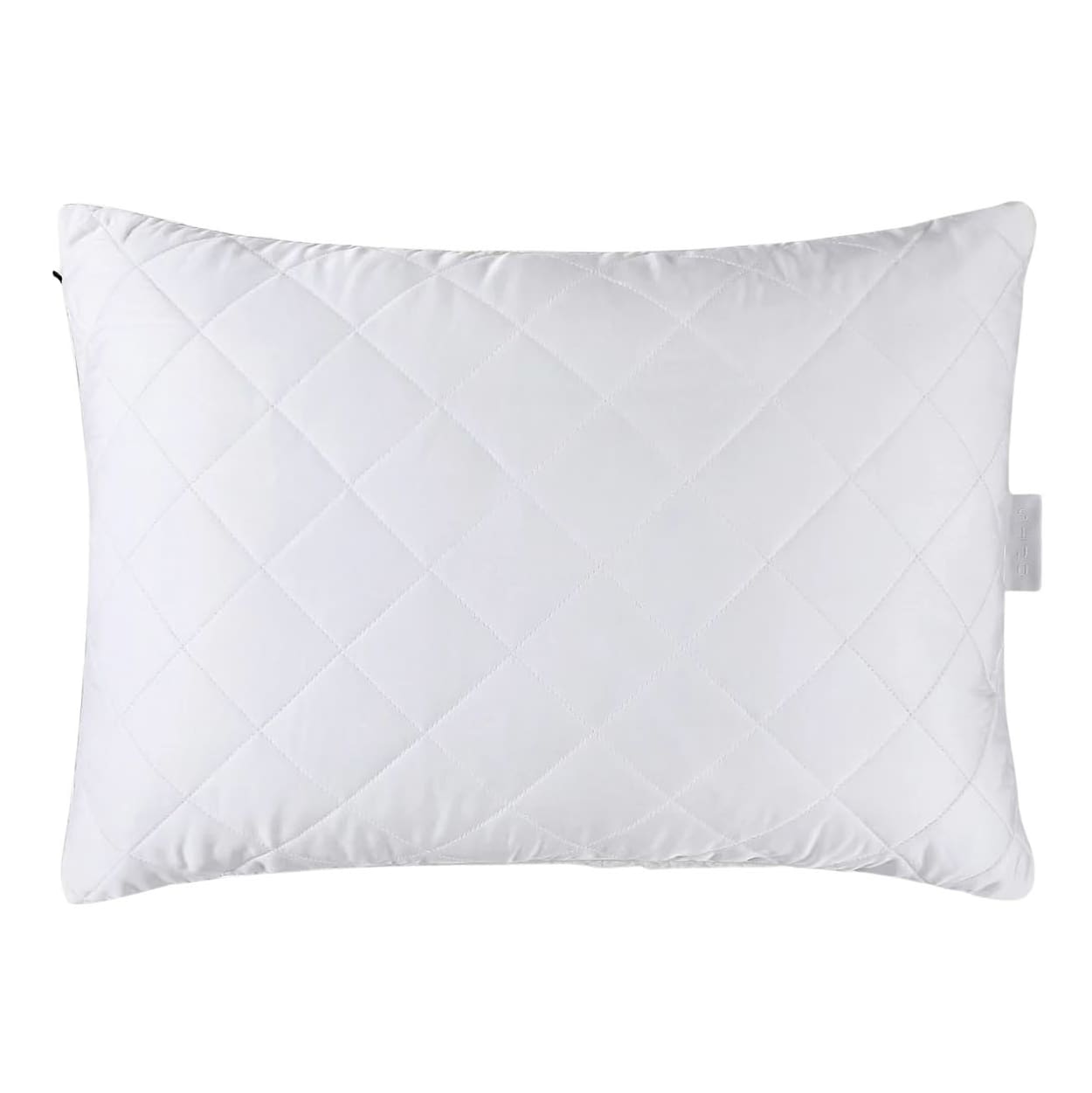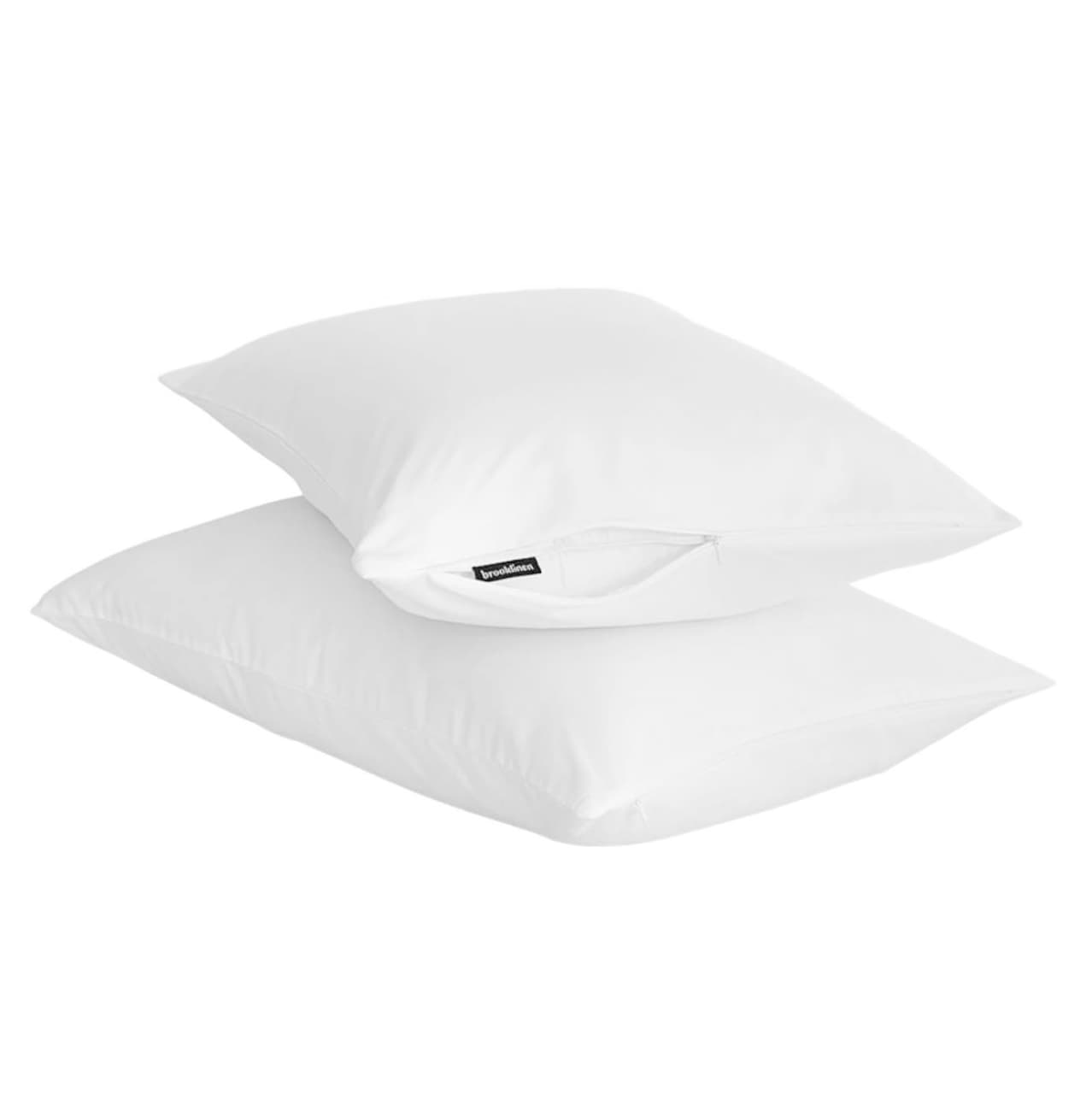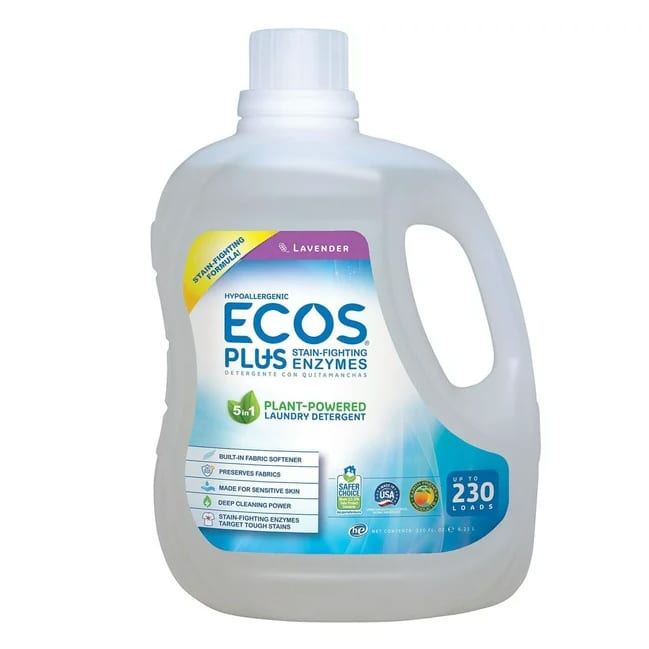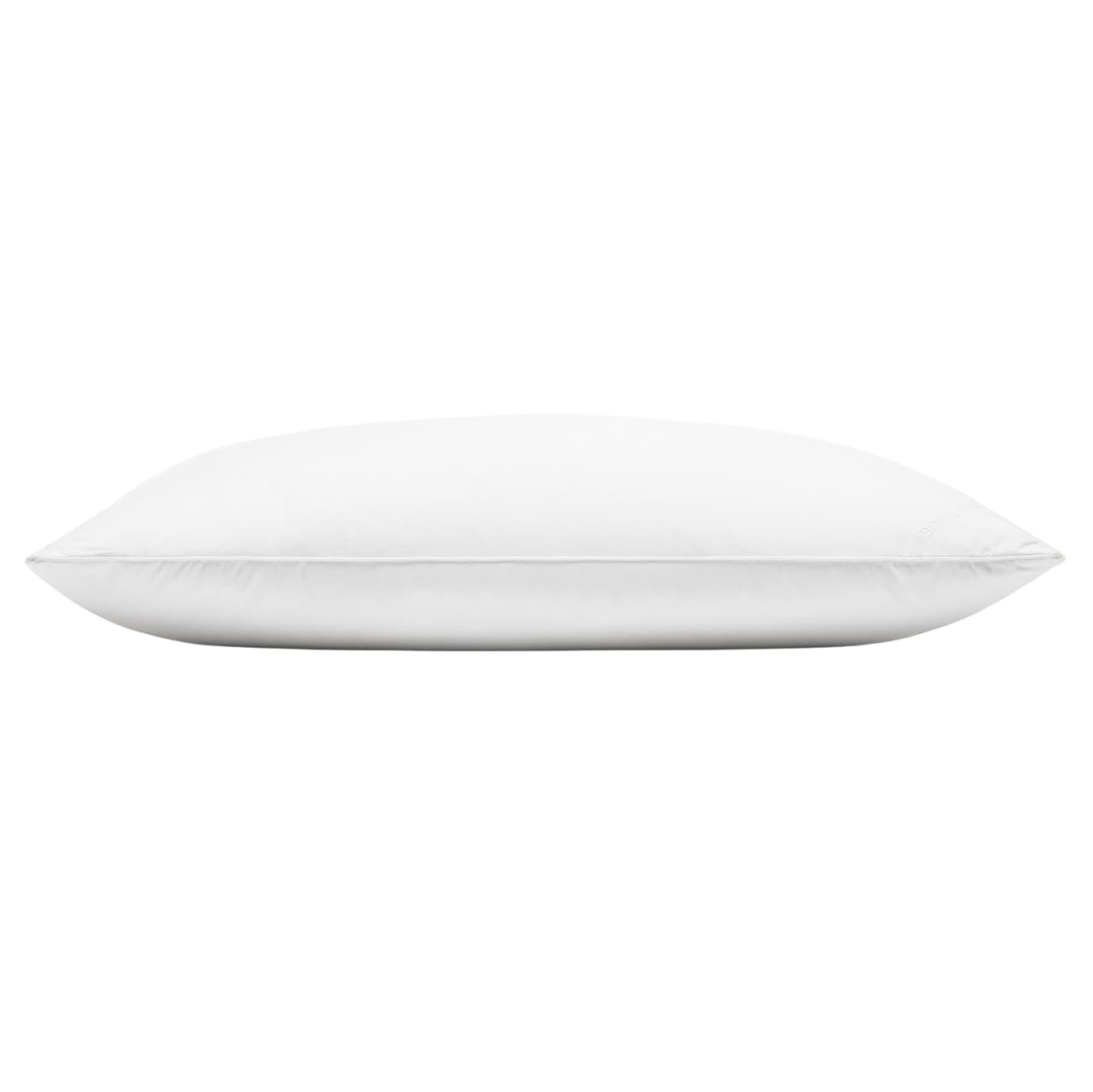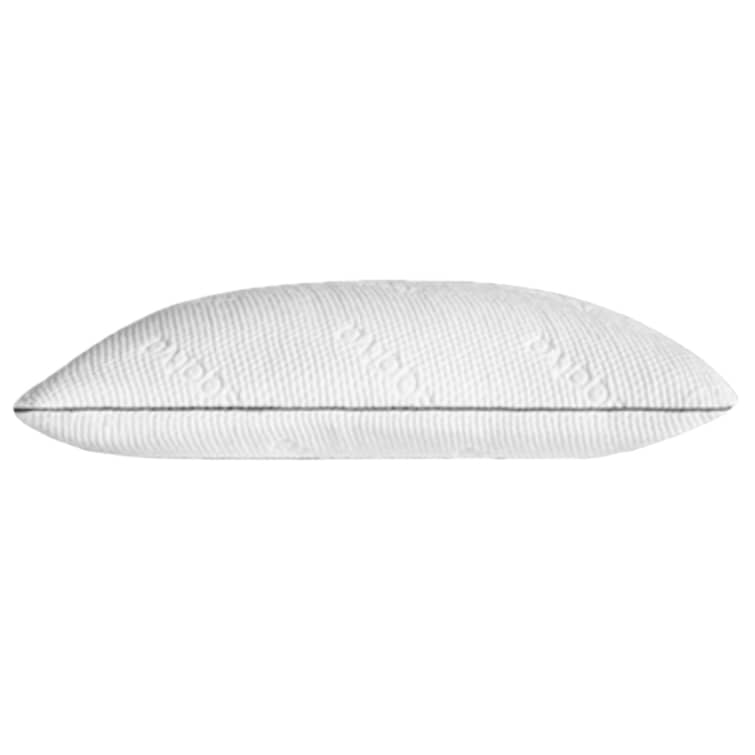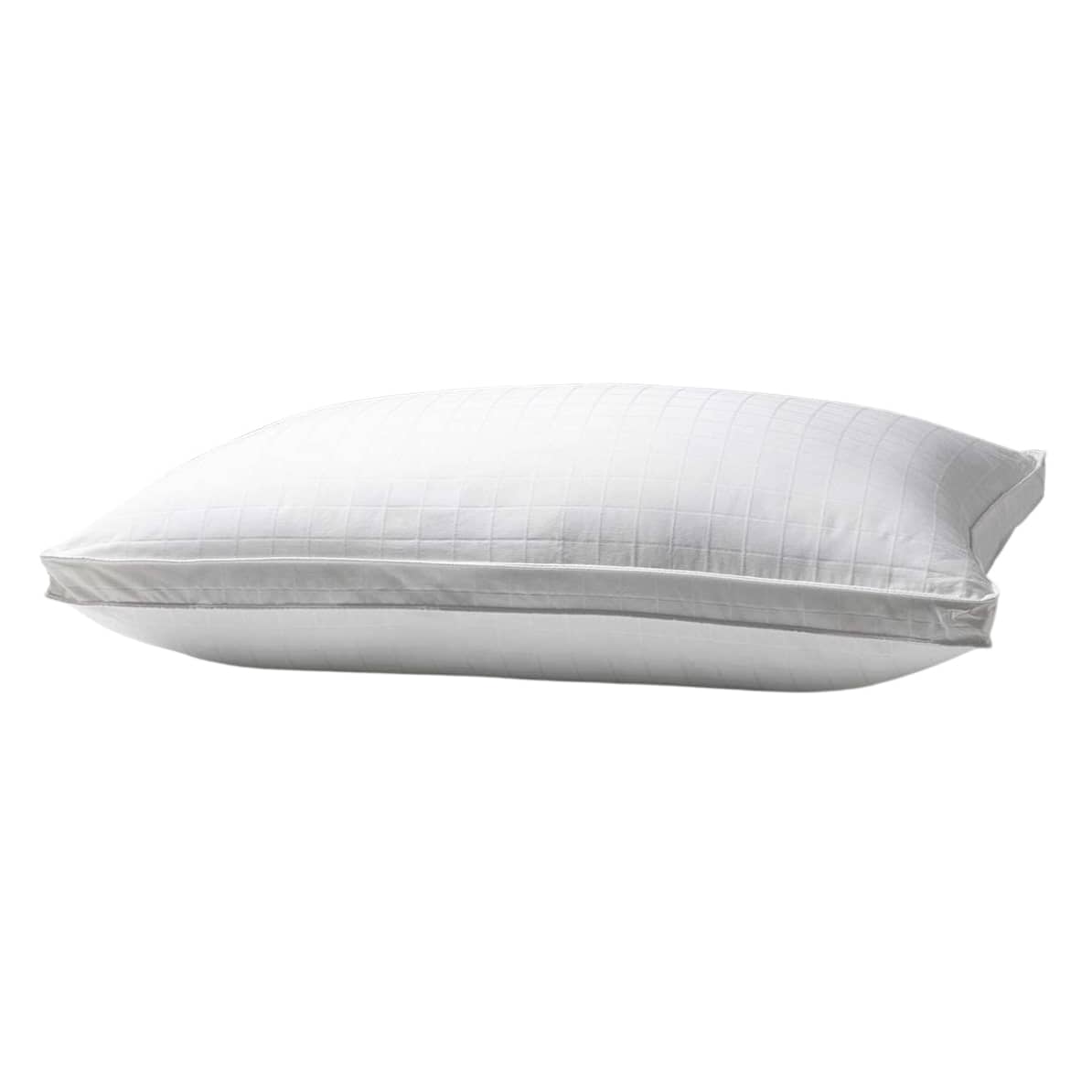When’s the Last Time You Cleaned Your Pillows?
That’s what we thought. Here are the best ways to wash them by pillow typeBy Eleni Gage
If we asked when was the last time you washed your pillowcases, chances are you’d have a ready answer about your most recent laundry day, what washing machine cycle you selected and maybe even some opinions on which bedding material you prefer. Now, what if we asked when was the last time you washed the pillows themselves?
In my experience the response is uncomfortable silence, human imitations of the “mind blown” emoji, or a sputtering of “the pillows? But…how?” That’s why we turned to experts, including textile consultants and sleep doctors to find the answer.
Why we should all add ‘wash pillows’ to our routine
A clean pillow is more hygienic
The experts we consulted in the fields of sleep medicine and cleanliness agree that we should all be cleaning our pillows every three to six months. First, there are aesthetic and hygienic reasons for doing so. “Our bodies secrete oils and odors; we sweat and shed skin cells when we sleep, not to mention saliva, ear wax, dust mites, allergens, mildew, dandruff—the list goes on,” says Sarah McAllister, founder of GoCleanCo, a cleaning company based in Calgary, Canada, and its cleaning-focused blog. “This party of bacteria ends up on our pillowcases and in our pillows.”
You’ll save money
Then, there’s an economic benefit to regular pillow-washing. “Cleaning pillows can help refresh and redistribute the filling, which can extend the pillow’s lifespan,” points out Jessica Ek, the Washington, D.C.-based senior director of digital communications at the American Cleaning Institute, a trade and research organization of manufacturers of household cleaning products.
It’s better for the planet
Extending the longevity of your pillows is environmentally savvy as well. Pillows should last longer, insists Harrie P. Schoots, a Cleveland, Tenn.-based textile consultant and past president of the American Association of Textile Chemists and Colorists. “There’s a lot of waste—and you as a consumer can do something” to extend the life of your pillows by caring for them properly, he says.
You may breathe easier and sleep better
Perhaps most important, there are medical reasons to wash your pillows. Michael Breus, Ph.D., DABSM, FAASM, warns that “letting your pillow accumulate too much dust and allergens can aggravate symptoms for those with breathing conditions” such as asthma and allergies. On the flip side: “Sleeping on a clean pillow and pillowcases can help promote healthy sleep and leave you feeling refreshed in the morning,” says Dr. Breus, who has run a sleep practice in Seattle for more than 20 years.
How often should you clean your pillows?
Wash sheets and pillowcases once a week, or, at the very least, every two weeks, and clean pillows one to four times a year (every three to six months). Dr. Breus recommends replacing old pillows with new ones at least every two years, and Schoots agrees: “I just can’t imagine keeping a pillow over two years,” he says. “Every single day, eight hours a day your head is sweating on this pillow—that’s 2,920 hours a year.”
Experts suggest using a pillow protector to keep your pillow cleaner, longer—especially if you have asthma or allergies. You can also look for pillows, pillowcases and pillow protectors that are treated with antimicrobial technology, says Schoots, who has done consulting work for a company that makes antimicrobial technology used in textiles. To extend the timeline between pillow-washing (say, from every three months to every six months), McAllister suggests “showering before bed (and going to bed with dry, clean hair), washing your face before bed, changing your bedding once a week and purchasing a good quality pillow protector.”
What to know about hand washing vs. machine washing
How exactly does one clean a pillow? The short answer: Remove all pillowcases and pillow protectors (you’ve been washing those biweekly right?) and read the care tag attached to each one to decide how to proceed. Your cleaning method depends on what your particular model is made of: Foam pillows may lose their shape in a washing machine and down or feather versions can be prone to mold when wet, for example.
Once you’ve got the recommendations down, you’ll still want to use your best judgment. Even pillows that are labeled machine washable may be better off with a hand washing. “Pillows become very heavy when they are wet,” says McAllister. “It is important to recognize that washing them in the machine without a balanced load can be damaging to your appliance.”
You can minimize that risk by washing pillows two at a time to balance the weight in the washing machine, but if you’ve got a fragile machine, McAllister says, “it may be best to wash them in the bathtub with a small amount of laundry detergent. Drain and wring them out well before you put them in the dryer.” Schoots seconds that approach: “Always handwash, because you’re going to end up with a longer-lasting, not misshapen pillow.”
Whether you hand or machine wash, use a small amount of a mild detergent, ideally one labeled as enzyme-active, such as ECOS Plus, or Arm & Hammer BioEnzyme Power. The enzymes will “break down biomaterials like saliva and blood,” says Schoots, and adds, to all of our dismay: “And every pillow has saliva or blood on it.”
If the pillow is not dryer friendly (say it’s made of memory foam), “You can place pillows outside in the sun to sun bleach them,” McAllister says.
Below, you’ll find expert recommendations for washing different types of pillows—provided you’re taking into account those manufacturer’s tag instructions.
Down or feather: Sidestep mold and misshaping
Down is the soft, fluffy layer coating the bellies of ducks, while feathers come from their wings or backs. Both are traditional, natural pillow fillings that require a little extra care. Some feather and down pillows say “dry clean only.” If that’s the case, believe them. The trick with down and feathers is that both contain natural oils, which harsh cleaning chemicals and high temperatures will break down, leaving the pillows lumpy, misshapen and difficult to fluff. For that reason, Schoots says (if your pillow doesn’t have a dry clean only tag) you’ll want to hand wash them with warm (not hot) water and throw in a half-cup of vinegar to freshen the pillows. The warm water will increase the acidic vinegar’s ability to protect the fibers in the pillow from mildew or bacteria.
Boll & Branch
Down Chamber Pillow
Other down or feather pillows are labeled “machine washable,” in which case you can wash them as you would fiberfill or any machine-washable pillows, says Katie Dills, a Baltimore County, Md.-based senior vice president of The Cleaning Authority, a nationwide company devoted to ecologically friendly housecleaning. Her recommendations are to wash at least two pillows at a time (to keep the load balanced), and if you have a top-loading washer, stand them vertically in your washing machine (to avoid the pillows getting bunched up and misshapen by the agitator in the center of the basin), then, add a small amount of mild detergent.
Dills likes to make her own liquid detergent out of a cup of Borax powder, a cup of washing soda, a cup of Castile soap, 10 to 15 drops of essential oil of your choice, and 17 cups of water. If that sounds like too much prep work for you, know that McAllister swears by Tide Original powder, saying, “The enzymes and surfactants can’t be beat.” Wash on the delicate or gentle cycle using cool or warm water—never hot, to avoid shrinking. If any soapy bubbles remain, run an extra rinse and spin cycle.
The real challenge is drying these pillows. McAllister believes you should never wet feather pillows “as the feathers can take ages to dry, and long periods of dampness can foster a perfect environment for mold growth.” She recommends spot-cleaning feather pillows, then air drying. Schoots advocates hand washing, then pressing dry between towels “to get out as much water as you can” before air drying.
If you do machine-wash a down pillow labeled as machine-washable, both Dr. Breus and Dills recommend drying it on low for multiple cycles until you’re sure it’s completely dry, and taking it out in between to fluff with your hands and distribute any clumps to ensure it dries evenly. (A higher heat cycle would break down those natural oils, causing clumping, and could even start a fire.)
For a less hands-on option, toss a few wool dryer balls (or clean tennis balls) into the drum to help pillows dry faster, emerge fluffier and retain their shape better. “In the textile industry, we refer to those as ballast—which is really just something to create mechanical action,” says Schoots. Without ballast, the feathers will follow the direction the water goes during drying, which, Schoots says “will pull the physical feathers and the fibers with it, and so the pillow will be mashed on one side.” The wool dryer balls or tennis balls will prevent that from happening.
Foam: Skip the washer-dryer
It’s unanimous: You would not, should not put these pillows in a washer and dryer. Either machine would flatten a foam pillow’s buoyancy, degrade the material and mess with their shape. In other words, such treatment would wipe the memory of this foam. “Foam pillows cannot be machine washed because the agitation may break up the padding,” Ek says.
Saatva
Graphite Memory Foam Pillow
Foam is actually polyurethane, Schoots explains, which is “not evenly dispersed, and the areas that are less dense are weaker, so when they fill with water, the pillow will fold at the places where there’s more air and less polyurethane; a whole chunk could fall off,” he says. “You have to spot wash them by hand, then pat dry and air dry.”
Luckily, most foam pillows come with a removable fabric cover that can be washed according to instructions. As for the inside, it’s time for an old-school handwashing session. Dills says, “Start by using a vacuum attachment to vacuum any dust or other items off the pillow.” (She likes a lint-roller for removing pet hair in between washes.) “Then, fill a tub or sink with warm water and add a bit of mild detergent,” she continues. “Submerge the pillow in the water and massage it, then remove the pillow from the water and squeeze it out,” she advises. “Repeat a few times. Drain the tub or sink and refill it with clean water. Resubmerge the pillow in the water, remove and squeeze the water out.” Finally, air dry the pillow on a drying rack—you could even bring them outside to dry them en plein air.
Fiberfill: Throw ’em in the wash, but carefully
Stuffed with synthetic, polyester fibers, these fiberfill pillows are the easiest to toss into the washer and dryer. You’ll still want to take care to place them vertically in the dryer, wash at least two at a time (to balance out the load) and wash on a gentle cycle with cold or warm water. “You can also add half a cup of white vinegar to the load for an extra boost of freshness,” says Dills. McAllister suggests a second rinse cycle, “as this will help with any leftover detergent or soap residue that can be irritating to your face.”
Sobel Westex
Hotel Sobella Supremo Pillow
Then, tumble on a low setting until the pillow is completely dry. Dr. Breus recommends adding a few dry towels to the machine to soak up some of the moisture. And don’t forget the tennis balls for fluff! In some cases, the fiberfill inside the pillow is coated in silicone, making it dry extra quickly, says Schoots. To find those, he suggests: “Look for pillows with packaging that says they will stay fluffy or won’t clump.” Finally, adds McAllister, “Once your pillow is clean and dry, put on a pillow protector” to keep it fresh between washes.
How to treat those yellow stains
First, know that you’ve done nothing wrong: “Yellowing occurs naturally in certain natural fibers because of metallic interaction with the oils and metals that are coming out of your skin,” explains Schoots. “Everyone’s perspiration is different—some people will never have yellow spots and others will; it’s the same with underarms and white T-shirts.”
If there are troublesome stains on a non-machine-washable pillow—or before you toss a machine-friendly one in the wash—“You can spot-treat with a mild soap like Dawn dish soap, to help cut any grease or stains and dab it with some water to rinse away any residue,” says McAllister.
An enzyme-active detergent in the wash can help treat blood and saliva stains, too. Also know that some yellow stains are almost impossible to eradicate. If you’re prone to yellow spots that no amount of cleaning can remove, simply cover a clean, dry pillow with a fresh pillow protector and pillowcase, and consider it out of sight, out of mind until it’s time to replace the pillow.
